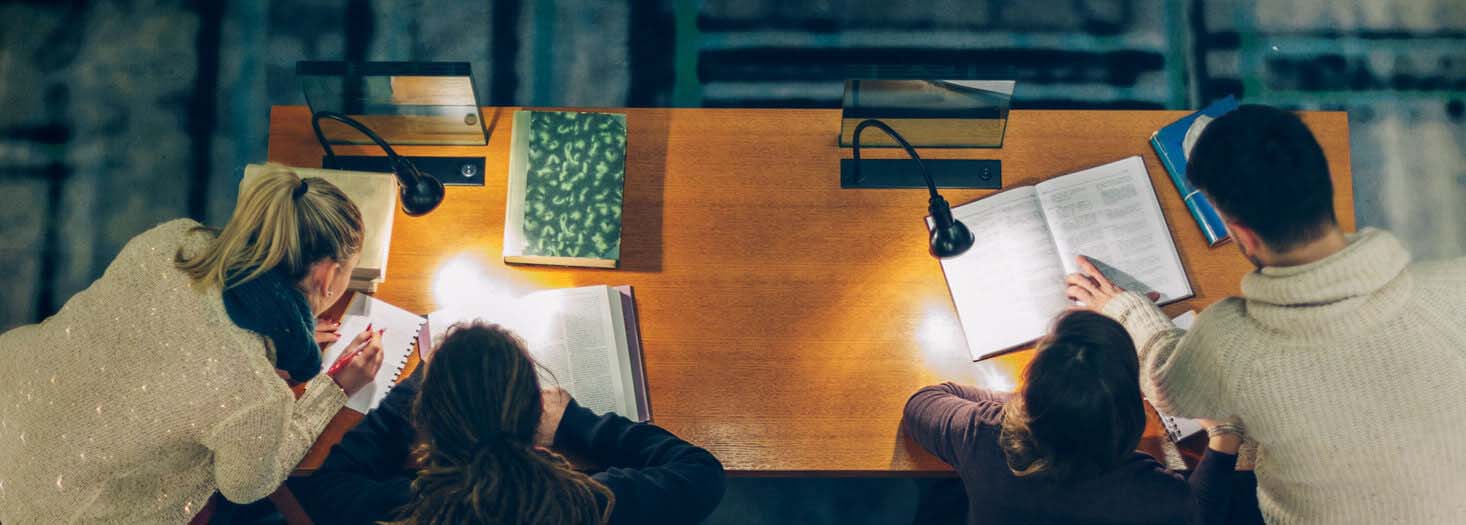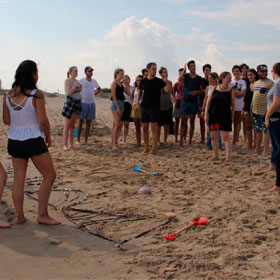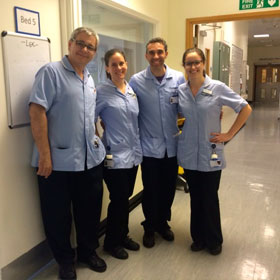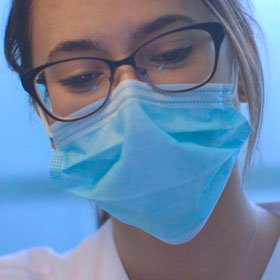Knowing how to think & knowing what to do
Providing a different learning experience is at the heart of everything we do – it is about learning more and learning better, inside and outside of the classroom. Everyone at the University strives every day to improve academically and scientifically. We want to do things well and then, to do them even better. And in all this there are two aims: for our students to know how to think and to know what to do.
Old-fashioned teaching is out
Our lecturers know that their job is not to teach, but rather to encourage each student to learn, mature and progress in their education. And if that means changing the way we teach, then we change it; and if it means leaving the lecture hall, then we go outside to learn. Old-fashioned teaching is out – after all, we need to train the professionals of tomorrow, not yesterday.
Do you speak English?
If you don’t speak English, you need to start learning. The professionals of the future need language skills. That's why all our students receive complementary (and free) English classes and French, German or even Chinese classes are also available. In addition, we can offer you the chance to study for a period at a European university, or to undertake international placements and internships to improve your international employability. Of course, it is important to remember that in order to finish your Bachelor’s Degree at CEU you will have to demonstrate a certain amount of ability in English.
Let’s get practical
The best way to learn is to learn by doing. Therefore, in addition to the theoretical training, our entire range of studies includes both compulsory and voluntary practical training to enable students to do just that. There are TV studios, a veterinary hospital, computer rooms, recording studios, a dental clinic, a pharmaceutical practical room, and simulation rooms. Whatever your vocation, you will get hands-on training from the first day without leaving the university. In addition, we have agreements with a large number of companies at which you can undertake placements to prepare you to join the professional world.
The world in just one campus
When you bring together people from more than 90 countries on the same campus, everything takes on a whole new meaning. Conversations in the corridor can turn into fascinating tales of distant corners of the world, exchanges of cultural traditions and different ways of seeing the world, international relationships and networking – all of which can come in handy in the future. As your horizons can keep on expanding, you may not even notice that you have become someone different and more cosmopolitan. CEU is the university where you will share a campus with young people from more than 90 countries.
Ready, steady, go!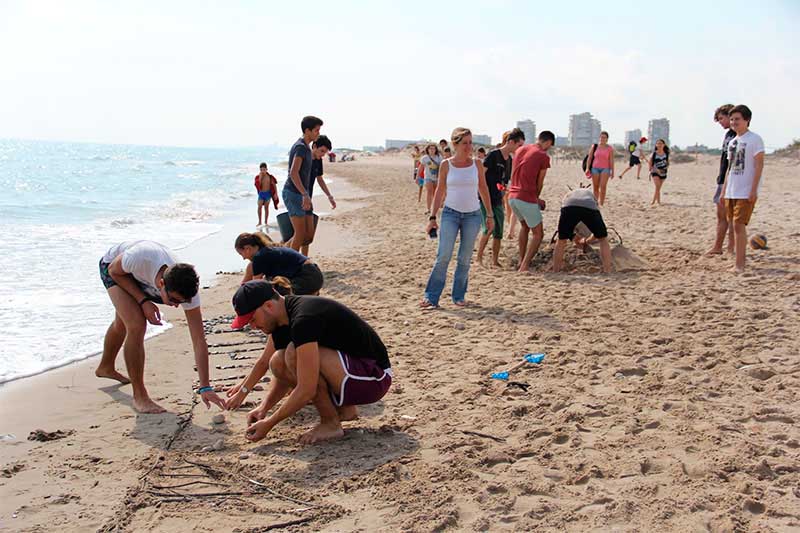
Lectures for the year for Design and Architecture undergraduates start… on the beach! Learning on the beach about applied physics for design can be fun and very instructive. Students face creative and team-based challenges: seaweed, stones, rocks, shells, and sand are the tools they have to use to overcome their first creative conundrums, enabling them to grasp physical concepts and how they can be used in the design of products and spaces. Afterwards, the students wonder: where will the next class be? |
From a placement to a permanent contract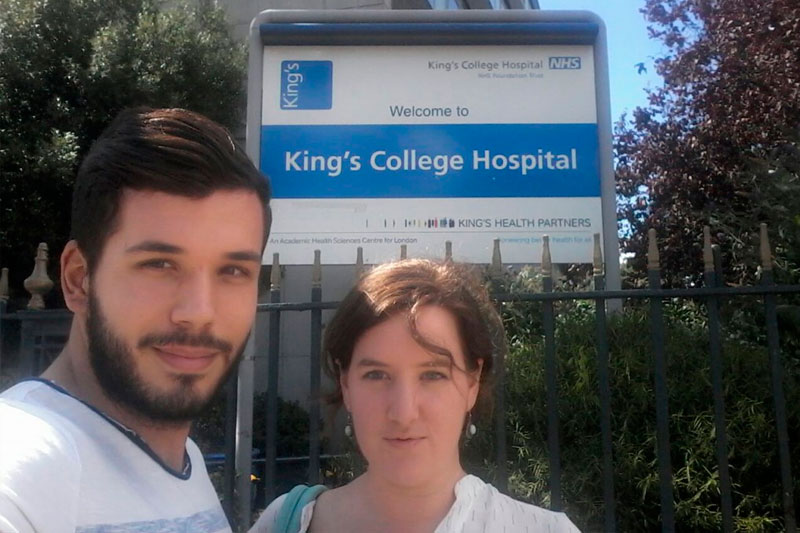
More than thirty CEU nurses have found employment at King's College Hospital in London, after undertaking placements there during the last year of their degrees. “It’s an experience that allows you to work, take care of patients, be part of international health teams and improve your English” – so say José Luis Maldonado and Ana Navarro about their time at King's College Hospital in London. José Luis Maldonado works in the post-operative area, taking care of patients who have recently undergone surgery: “each nurse is responsible for 4 to 6 patients: you live your life alongside them and you get to know their needs.” For her part, Ana Navarro tells us that CEU’s professional integration program “has allowed us to get a permanent contract, to have the chance to get promoted, or change department. My goal is to continue working in the UK a few more years and take this opportunity to gain further training and specialize in ICU nursing.” |
|
|
Beyond the Bologna process
Those in academia who lived through the creation of the European Higher Education Area did not think they would ever see such a widescale revolution in the university sector again. Yet the new model now being developed demands an even greater transformation.
The first revolution

The Bologna declaration, made by 29 European education ministers in 1999, marked the beginning of the process of convergence for the establishment of the European Higher Education Area in 2010.
EThe Spanish university system was forced to adapt the way it worked: teaching objectives were replaced with target competencies for each programme and even the qualifications themselves were changed, with the licenciatura form of undergraduate degrees giving way to the grado.
This was a true revolution, but it was one achieved through high-level planning, albeit one with some delays and some adjustments also needed to be made. The students and lecturers adapted successfully to this new scenario, even if there was nothing else for it anyway, being somewhat secondary players in this top-down revolution.
Real convergence
Another real revolution is starting to happen now. And this time, it’s not the result of a decision taken behind closed doors somewhere far away. It’s the result of a real social change, which the pandemic has accelerated.
And in this, the students are the main players. The young people who will soon make the university campus their home are all digital natives. They were born into a time in which the whole world of knowledge is at their fingertips, their senses are conditioned to expect things to move fast, and their attention jumps easily from one thing to another.
The companies and organizations which they’ll work for after graduation are also adapting to the changing landscape and are now exploring the previously uncharted lands of flexibility, cross-cultural dialogue and environmental commitment.
But there’ll be no slowing down in these years between school and work, as the university system has changed even more, to adapt both to new types of student and the new kinds of graduate the job market demands.
A three-dimensional challenge
Right now, universities are searching for answer to a three-dimensional, complex challenge. First of all, they need to find new methods of teaching students. These new approaches must take advantage of what the student already knows, develop their capacity for critical thinking, encourage them to assess their own progress, and draw out their leadership capabilities, amongst other things. There’s no doubt that it’s a difficult task, but techniques such as experimentation, teamwork and gamification have proven their effectiveness. These are the new tools with which lecturers can use to achieve a memorable learning experience.
The second part of the challenge is technological. UNESCO says that “information and communication technology (ICT) can complement, enrich and transform education for the better.” The possibilities technology can offer us are still being explored, but they allow us to frame the learning process in a manner which feels comfortable for the digital natives that today’s students are, making the learning process that much easier.
And finally, the pandemic has forced universities to find flexible educational solutions given the mobility problems faced by the wider population.
Back to the beginning

In this uncertain scenario – and yet also one full of potential for the transformation of higher education – it's reassuring to be able to go back to the beginning.
The key to everything is still our teaching staff, our lecturers. Only a master of the art of teaching can give a truly magisterial lesson – and make the classroom a space for growth.
The best kind of teacher is the one who finds a way to ensure every person in the classroom is able to acquire the skills they will need in the future. That’s what our lecturers do: it’s not about transmitting knowledge, but about encouraging the students to progress, drawing them along their own path of personal discovery. Our lecturers are the best guides from them on this journey of development: the students arrive as teenagers and leave as adults who can think for themselves. Our lecturers do so much more than merely lecture or teach. They cultivate, they guide, they point the way to growth.
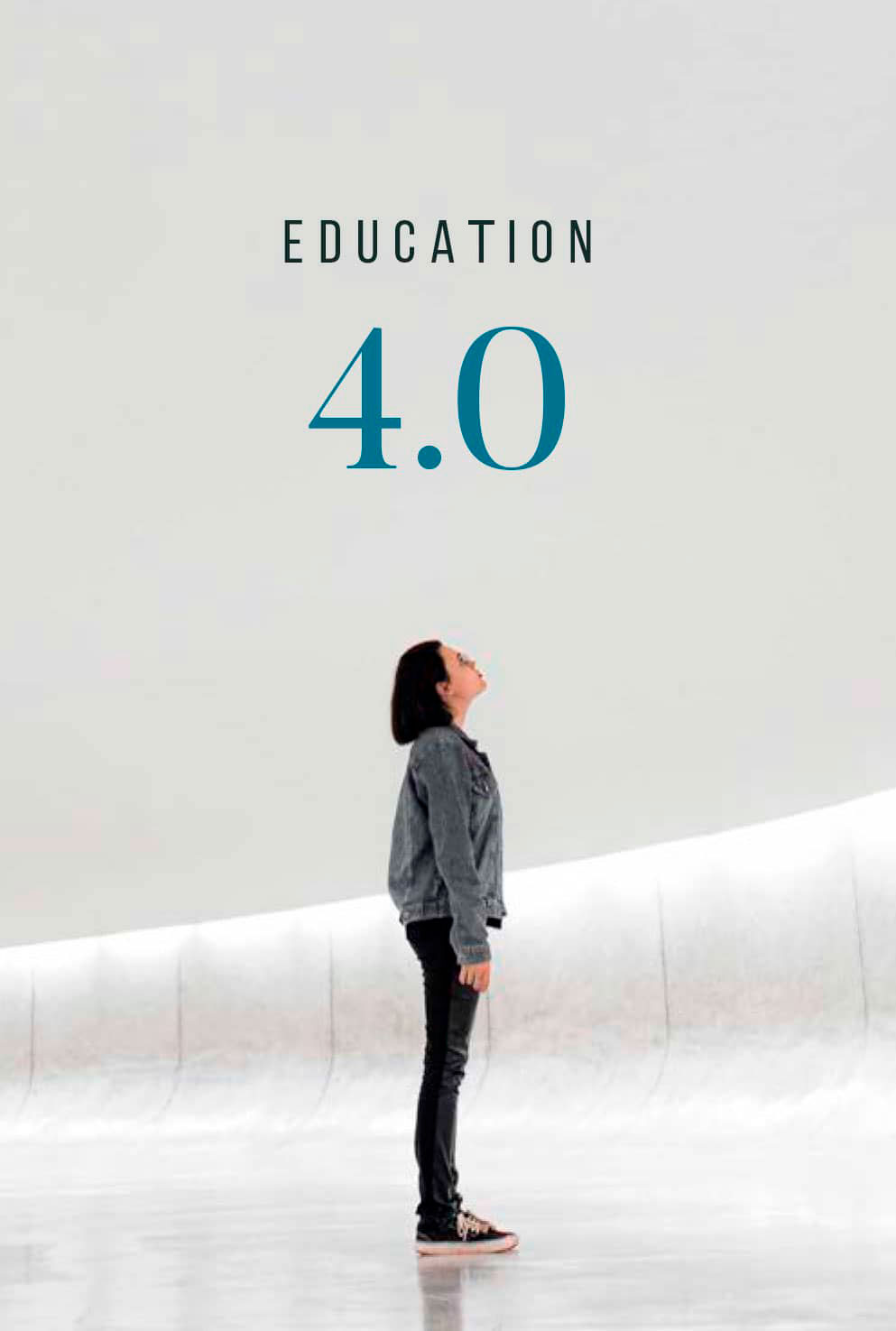
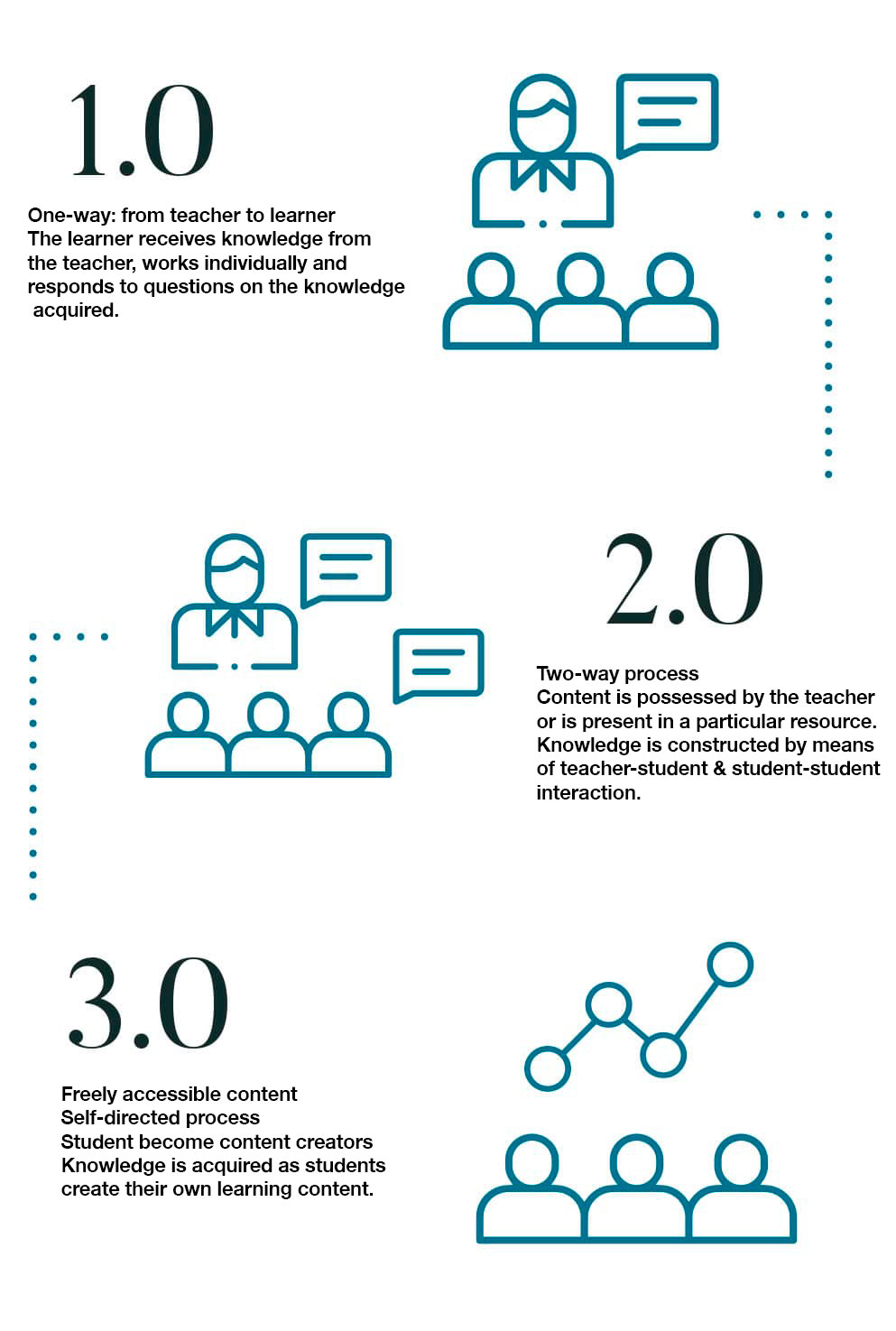

1. Project-based learning
The project is carried out over a particular period of time to fulfil a specific objective, by undertaking a series of tasks and using resources effectively. Learning is constructed by means of the actions the student takes.

2. Cooperative learning
Each team member is responsible not only for their own learning but also for supporting that of their teammates, enabling an atmosphere of success and achievement to be created.
3. Learning and service
This combines training provided in the classroom with community service, stimulating reflection, critical thinking, and personal and civic responsibility. Students take part in activities which address local needs, enabling them to develop their academic skills while demonstrating their commitment to the community.
4. Challenge-based learning
This active-learning framework presents students with a real and meaningful problem, requiring them to define the challenge to be addressed and to implement a solution.

5. Gamification
Gamification takes advantage of students’ predisposition to engage in games, motivating them to take action and boosting both their learning and their desire to resolve problems.
6. De Bono's six thinking hats
This approach helps students to be open to other perspectives and to be more flexible, reflective and original in their thinking. This facilitates better decision-making and improved interpersonal relationships, boosting productivity.
7. World Café
The World Café method brings together groups of people to discuss key issues and generate ideas, agreements and creative and innovative courses of action. And it all happens within a friendly, welcoming and conversational atmosphere – just as if they were chatting in a café, in fact.


8. Fishbowl
This approach sees participants arranged in two circles, one inside the other. Opinions are expressed in the inner circle, where there’s also an empty chair. If someone from the outer circle wants to express their opinion, they take the empty chair but that means that someone else from the inner circle must then give up their place and sit in the outer circle. This innovative method facilitates debate amongst large groups to take place in a structured way and enables an exploration of different possible solutions to a given problem.
9. Role-playing
Participants must play the part of a particular person and take on their attitudes, perspective, ways of thinking and behaviour, enabling students to examine an issue from a different point of view.
10. Storytelling
A story is told from a specific perspective, conveying a particular course of events. The idea is for the medium to stimulate the emotions of the listener and so ensure that the content passes into the listener’s long-term memory.


